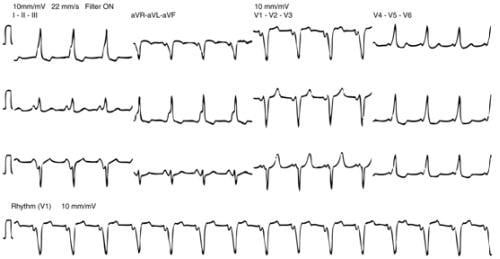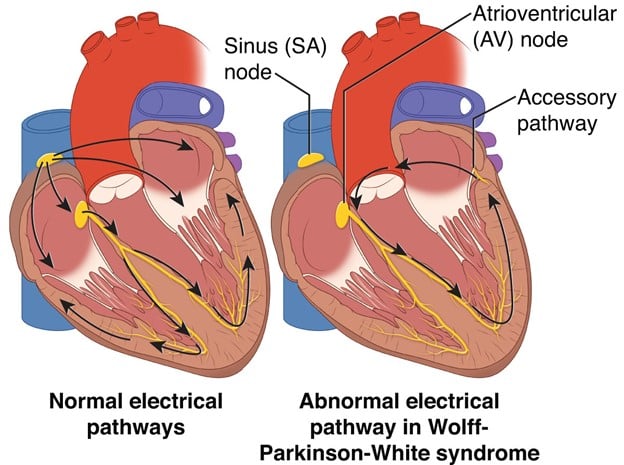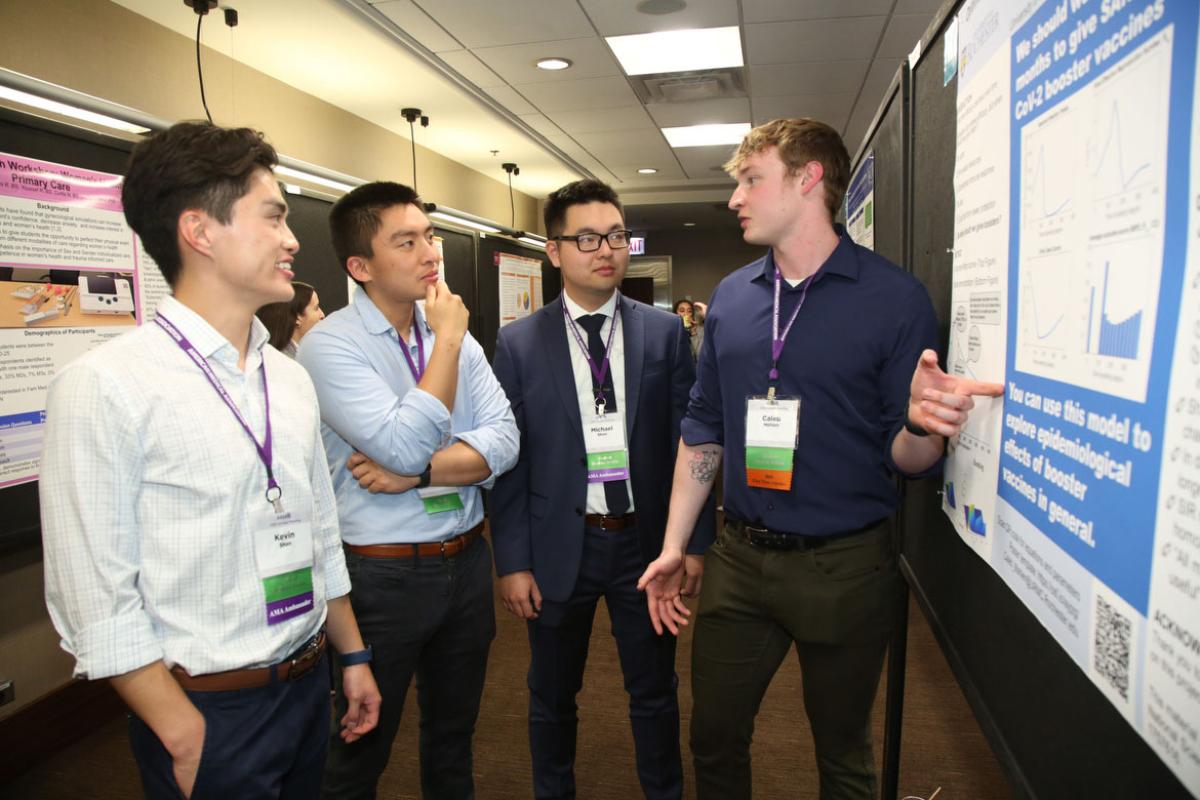If you’re preparing for the United States Medical Licensing Examination® (USMLE®) Step 2 exam, you might want to know which questions are most often missed by test-prep takers. Check out this example from Kaplan Medical, and read an expert explanation of the answer. Also check out all posts in this series.
A 26-year-old first-year resident comes to his physician for evaluation. He recently went to the emergency department with palpitations, and an atrial dysrhythmia was diagnosed. The decision was made to start an intravenous infusion of diltiazem, which led to unstable ventricular tachycardia that required cardioversion. An ECG is shown. Which of the following is the most likely diagnosis?
A. Atrial fibrillation.
B. Pre-excitation syndrome.
C. Premature ventricular contraction.
D. Supraventricular tachycardia.
E. Ventricular tachycardia.
The correct answer is B.
Kaplan Medical explains why
Pre-excitation syndromes present with a short PR segment, a slurred upstroke or delta wave, and a widened QRS complex. The most common of these syndromes is Wolff-Parkinson-White (WPW), where there are accessory connections between the atrium and ventricle as a result of anomalous embryonic development of myocardial tissue. This allows for electrical conduction between the atria and ventricles at sites other than the atrioventricular node.
Medications such as calcium channel blockers (e.g., diltiazem, verapamil), β-blockers, and digoxin can block conduction through the normal AV node pathway, thereby increasing conduction through the aberrant pathway and precipitating unstable ventricular arrhythmias. Amiodarone and procainamide are the preferred agents for WPW patients in atrial fibrillation and rapid ventricular response.
In Wolff-Parkinson-White syndrome, abnormal conduction pathways can bypass the normal electrical conduction pathways of the heart. One prominent and noteworthy accessory pathway, frequently described in WPW, is the Bundle of Kent.
Why the other answers are wrong
Choice A: Atrial fibrillation (AF) is not a pre-excitation syndrome. AF is the most commonly encountered arrhythmia in clinical practice and is defined by the absence of coordinated atrial systole. Patients with atrial fibrillation will not have P waves nor delta waves.





